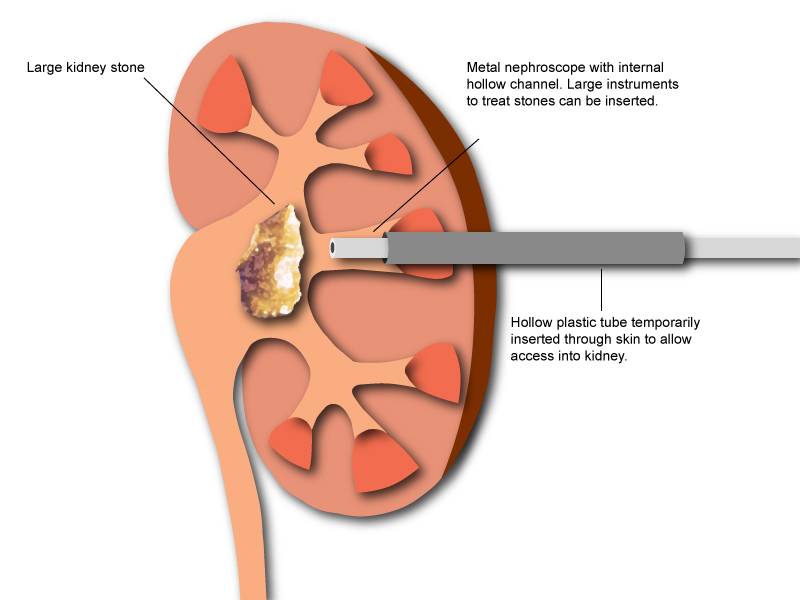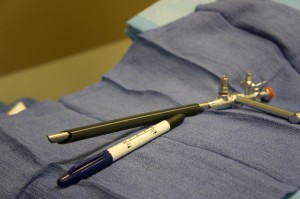Percutaneous stone surgery is usually used for larger stones. A small hollow tube is placed directly through a patient’s back into the kidney through which larger instruments can then be used to fragment and extract the stone(s). Although this approach typically requires a hospital stay and is more invasive than ureteroscopy or extracorporeal shockwave lithotripsy, it is often the most effective method for treating large stones quickly and completely. For more information on comparing the surgical options for kidney stones, see our comparison chart.
Percutaneous stone surgery may also be indicated in certain situations where the ureter below a kidney is obstructed, such as in ureteropelvic junction obstructions, where a ureteroscope cannot be advanced from below.
Fast facts about percutaneous nephrolithotripsy:
- Typical operative time: 1-2 hours
- Usual hospital stay: 1-2 days
- Average number of days before going back to work: about one week
- Average number of days before feeling back to normal: about two weeks
A photograph showing a nephroscope used for percutaneous nephrolithotripsy. The gray tube around the instrument is the sheath placed temporarily into a kidney to allow access. A pen is shown for size comparison.
Video of percutaneous nephrolithotripsy procedure.
Video of percutaneous nephrolithotripsy procedure of a soft matrix stone. This type of stone is rare and primarily composed of soft tissue elements. It is usually associated with infection.


Dr. Nguyen was/is the only doctor who gave me hope, by performing this surgery in April. I need it done again, as infection stones are still there. It’ll be worth it.